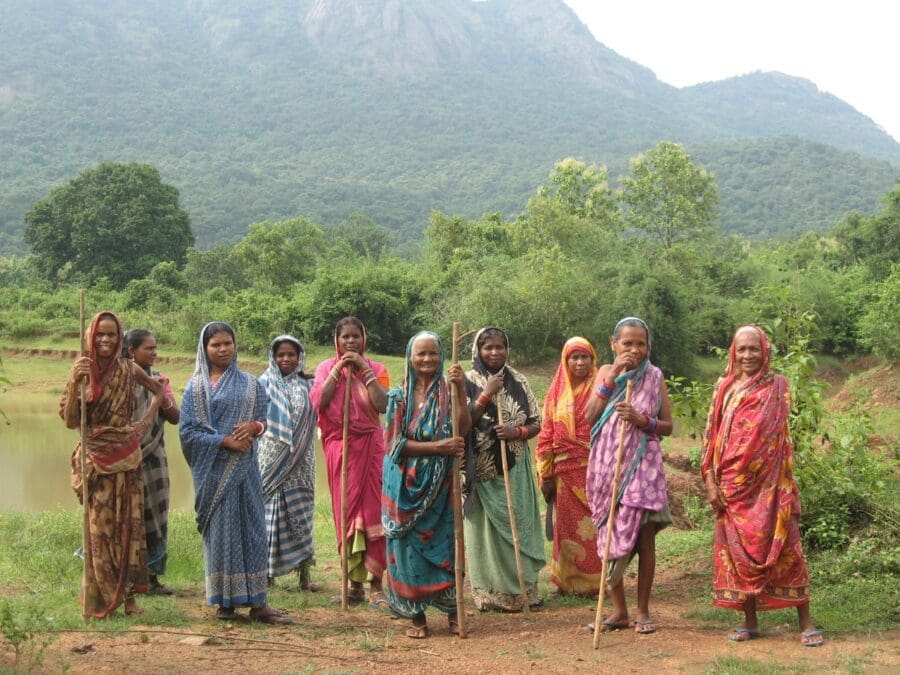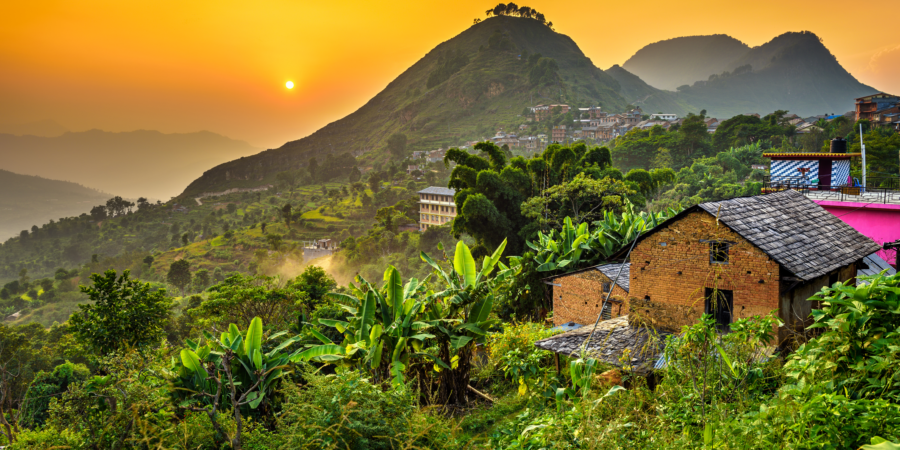With at least 6 million cases, India is currently among the world’s top three countries affected by COVID-19. The country’s forest-dwelling and Adivasi communities – already vulnerable and marginalized – have also suffered the pandemic’s economic ravages, facing extensive food insecurity and loss of livelihoods. These impacts have piled on a long list of injustices already facing these communities, given India’s history of exclusionary conservation and economic policies.
Now, a new study is shining light on how some Adivasi and traditional forest dwellers have survived the COVID-19 crisis with little outside help.
“Community Forest Rights and the Pandemic: Gram Sabhas Lead the Way,” released on October 2, has been published by a team of independent researchers from Community Forest Rights -Learning and Advocacy (CFR-LA) and Vikalp Sangam. The report features case studies from various regions of India to illustrate how recognition of rights to use and manage forests has made it possible for their inhabitants to overcome an unprecedented crisis.
The case studies focus on areas where land and forest rights have been recognized and local institutions (village assemblies – Gram Sabhas) were empowered under the Forest Rights Act 2006 (FRA) and the Panchayat Extension to Scheduled Areas Act 1996 (PESA). These two landmark legislations secure the rights of Adivasis and forest dwelling communities over their lands and resources.
According to the report, local communities and Gram Sabhas better understand local complexities than the local administrations while dealing with crises and respond faster when empowered by FRA. This is illustrated in a case study from Rajnandgaon, Chhattisgarh, where Gram Sabhas initiated a holistic COVID-19 governance plan well before local administration.
It also gives examples of how secure tenure and empowered Gram Sabhas can help reduce distress migration, as evident in Nandurbar district.
“Until 2016, a lot of people used to migrate out of Nandurbar district for work,” notes Pratibha Shinde, a member of Lok Samanvay Pratisthan, CSO. “Workers would go for six months as laborers to work in agricultural fields. However, since community forest resource (CFR) recognition, that has stopped.”
Shinde adds that during the COVID-19 lockdown, the villages found means to earn a livelihood: in collection of forest produce, tree plantation through a national rural employment guarantee program, building ponds and water harvesting for irrigation and other purposes. This was made possible through Community Forest Resource management by the communities.
The report notes that the COVID-19 lockdown coincided with the peak season of minor forest produce collection. Ownership rights over forest produce also ensured better and timely livelihood opportunities–even during the national lockdown.
For example, in Gondia, Maharashtra, close to 50 Gram Sabhas are organized as a federation, which guarantees competitive prices and bonus for the communities for their produce collection. Since the COVID-19 crisis, the federation, which includes 29 villages, has earned 2.5 crore Indian Rupees (US $340,000) by selling Tendupatta, all while taking precautions against the spread of COVID-19.
There are also striking examples of how local knowledge and long-term conservation efforts led by local people can create healthier and more diverse ecosystems, further contributing to resilience. For example, Adivasi Kondh communities in Nayagarh, Odisha were able to survive on a diverse range of forest foods during the lockdown as they have been regenerating their natural forests for over four decades. In Dhule, Maharashtra, communities had saved up food grains and vegetables, as they have been practicing self-sufficient agriculture as a way of long-term cluster development for many years since the legal recognition of their community forest rights.
In Kutch, Gujarat, local knowledge of water systems, grasses and soils allowed Maldhari pastoralists and local cattle breeds to survive during the lockdown, which coincided with a dry period. Gram Sabhas have even been ensuring that particularly vulnerable nomadic communities, such as those in Narmada, Gujarat received food supplies during the shutdown.
Women have also played a key role in managing the crisis in areas where the Gram Sabha were empowered. In Dindori, Madhya Pradesh, women organized a system of food distribution and water collection that made sure that physical distance was maintained in Baiga villages.
“Until now, communities have chartered their ways through difficult terrain, but this crisis? Nobody ever imagined that [they] would have to face a situation that was totally beyond their imagination and control,” said Trupti Mehta of the ARCH-Vahini CSO. “Yet this was the first time when the Gram Sabhas were actively involved, in fact, entrusted with the management and protection of their forest resources.”
Mehta says the main challenge now is that these communities can carry out their processes democratically and transparently as they continue to fight Covid-19. In this new and complicated context, they must be allowed to continue their forest management and protection work as they have for generations. However, their rights are under threat due to several environmental law amendments and forest land diversions underway in India, which will dilute the power of Gram Sabhas.
This report is a much-needed reminder of the critical need to prevent this rollback, and of undoing the historical injustices committed against India’s forest communities as the only sure path toward effective natural resource management.







